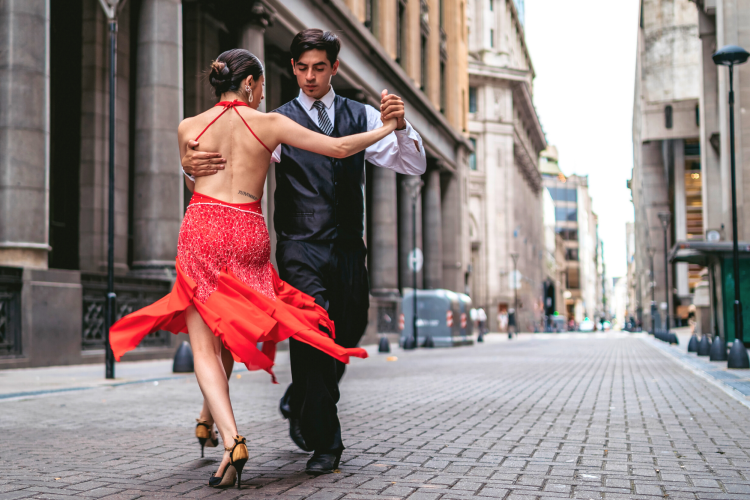The 6-Second Trick For Dance Fridays
Table of ContentsThe Only Guide for Dance FridaysThe Facts About Dance Fridays UncoveredDance Fridays Can Be Fun For AnyoneThe Buzz on Dance Fridays
Allow's consider Salsa dance and music as a fantastic large Tree that appears like this: Salsa is danced world-wide while lots of technical elements of the dancing are the exact same across designs (6 actions over 8 beats danced on a quick-quick-slow or slow-quick-quick rhythm), there are a number of "hallmark" functions of the major styles of Salsa that identify one from the other.Pairs taking part in a Casino site Rueda dance all relocate unison as called by a Leader. Distinguishing functions of Cuban design salsa are circular turn patterns (with "break back" steps on matters 1 and 5) along with body language influenced by typical Afro-Cuban folkloric dances. Distinguishing attributes of Cali design salsa fasts and detailed footwork, danced with a strong hand hold connection in between companions.
The origins of the design are a topic of dispute, yet it is said that New York design Salsa dance came from in the 1960's as a result of the influx of Latin American emigrants after the Cuban Transformation. Eddie Torres is the most well understood New york city style dancer, being nearly globally credited with popularizing the style to dance centres outside of New York.
The fundamental rhythm of "On-2" is slow-quick-quick. The "youngest" of the designs of Salsa, L.A. Design (some individuals have called it "West Coastline" design) came to be preferred in the 1990's and has its beginnings in ballroom (Mambo, Swing and Cha, Cha, Cha). Transform patterns lead and adhere to strategies are greatly affected by these styles, with the Cross Body Lead being the cornerstone of the style.
Facts About Dance Fridays Uncovered
Design are implementation of turn patterns and figures in the "slot", with the break steps on counts "1" and "5". While Salsa songs has strong origins in Cuban, Colombian and Puerto-Rican folkoric traditions, it can not be marked down that all Afro-Latin and Latin American societies have added to contemporary Salsa songs as we understand it today.
It's feasible that as a result of political factors the contribution of Afro-Cuban culture and heritage to contemporary Salsa in the 1960's and 70's is not widely recognized, however it can not be overlooked the huge payment and influence of the "Queen of Salsa", Celia Cruz. A home name in Cuba and the Central Americas as a singer in the 1950's, Celia left Cuba for the U.S

Today Salsa songs is developed, executed and well known worldwide. In 2000 the influence of Latin American songs and culture (not simply Salsa) was recognized by the National Academy of Recording Arts and Sciences in the U.S (http://ttlink.com/salsacrazysf1). and the Latin Grammy Honors were produced. The Latin Grammy's have accentuated the Salsa Legends and modern Salsa artists alike
Dance Fridays Can Be Fun For Everyone
distinguishing attributes of Salsa music are: 4/4 time trademark, Son Clave and Tumbao rhythms, Montuno Piano Unless you have a background in songs, the above 3 features possibly suggest absolutely nothing to you. A less complicated way to explain Salsa songs is how it does NOT seem like various other kinds of Latin American music.
Bachata is a straight 4 beat dancing with an occurrence of a syncopated guitara line and a clear absence of any "difficult" piano, brass (trumpet, trombone) lines. Cha, Cha, Cha looks like Salsa songs one of the most as it seems like "truly sluggish" salsa/mambo. salsa club san francisco. Cha, Cha, Cha can be identified by it's emphasis of the dual tumbao beat on matters 4 +5 and 8 +1 (the "cha-cha-cha") You have actually been to a Salsa evening at a club and you're connected you enjoy the songs, the energy, the look of 2 dancers moving throughout the dancing floor carrying out trendy spins and turn patterns
It's time for lessons. With a lot of workshops around and different designs to pick from, where does a full rookie begin? Many all new professional dancers pick to discover L.A. "On-1" design slotted Salsa designs are the most prevalent in The United States and copyright (with some exemptions of some urban centres that still mainly welcome Cuban and Puerto Rican styles) and L (https://medium.com/@evanmargolin94124/about).A
.A. Style will swiftly show you the basics of Salsa timing, weight transfer and transform pattern implementation. Several professional dancers, once they've had a year or two of dancing L.A. Design Salsa under their belts, "button" to New york city design in order to expand their dance vocabulary; yet many dancers make a decision to adhere to simply one style of Salsa and enjoy their time on the dance floor in that certain design (salsa club san francisco).
Style and New see here now York Design all being danced in the exact same club, with much of the dancers having the ability to switch over from one style to the other from one track to the next. Regardless of which style you choose it is essential to stick to that design until you're really comfy with the basics of timing, body rhythm and foundation step execution prior to taking into consideration "switching" designs (if you want to).
